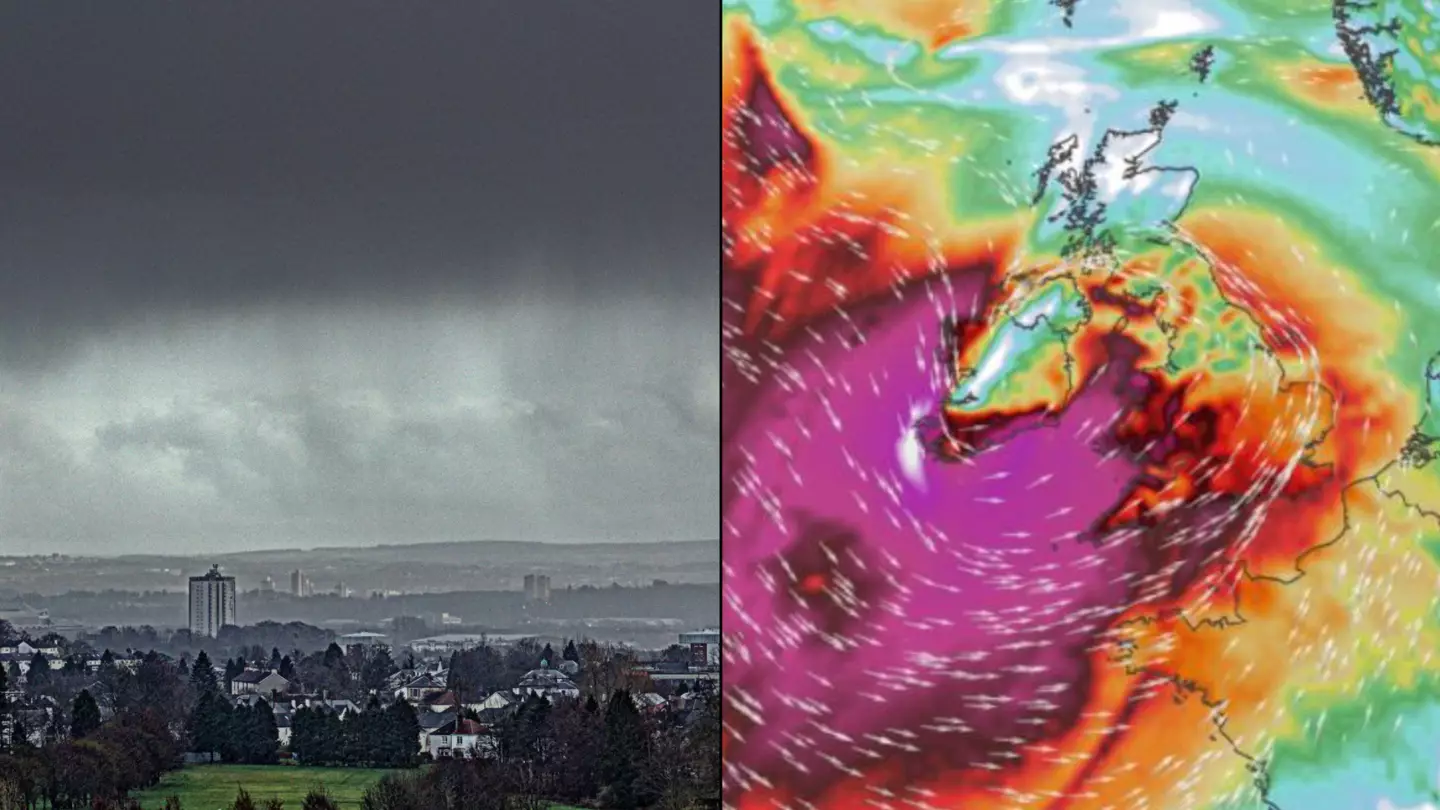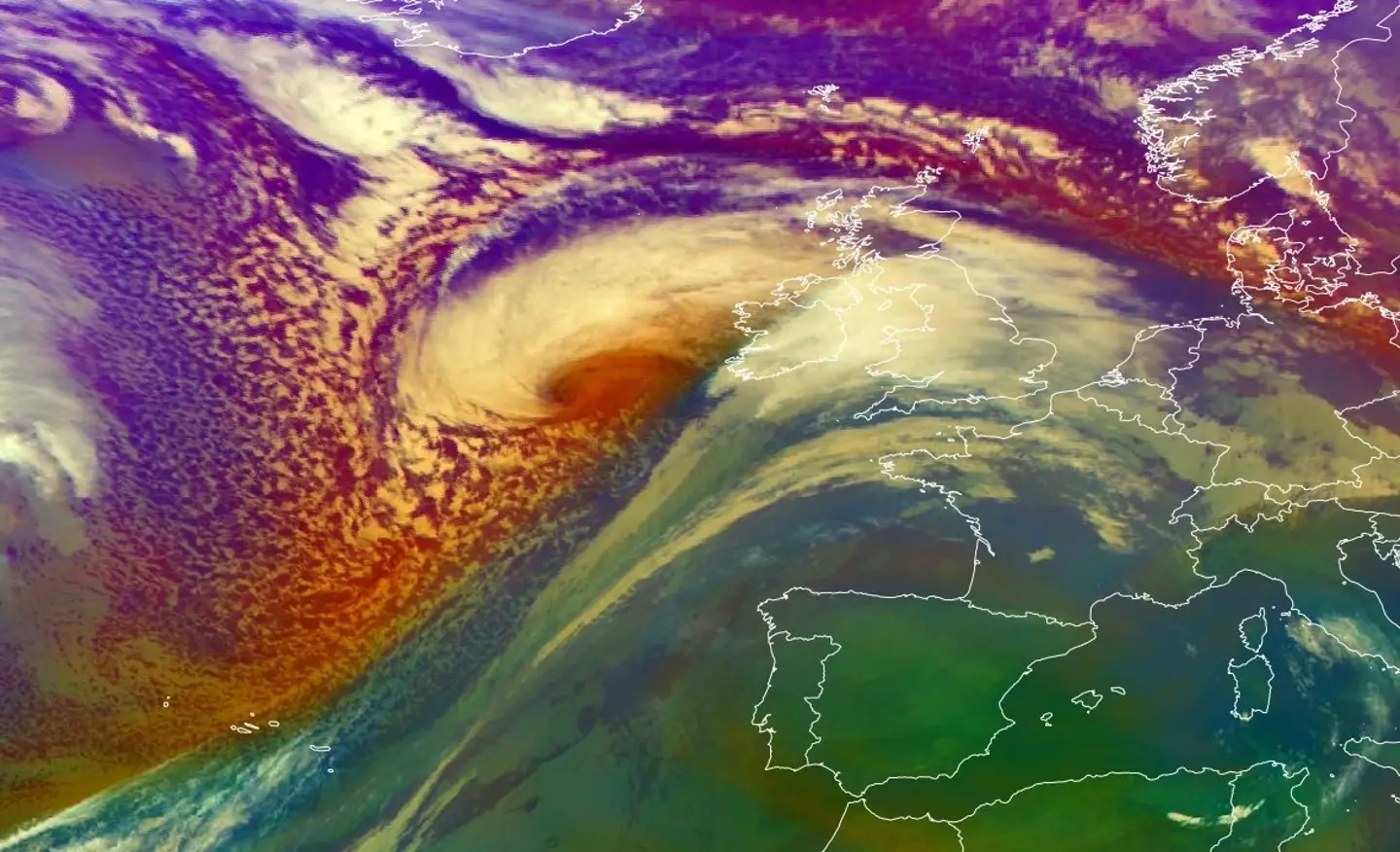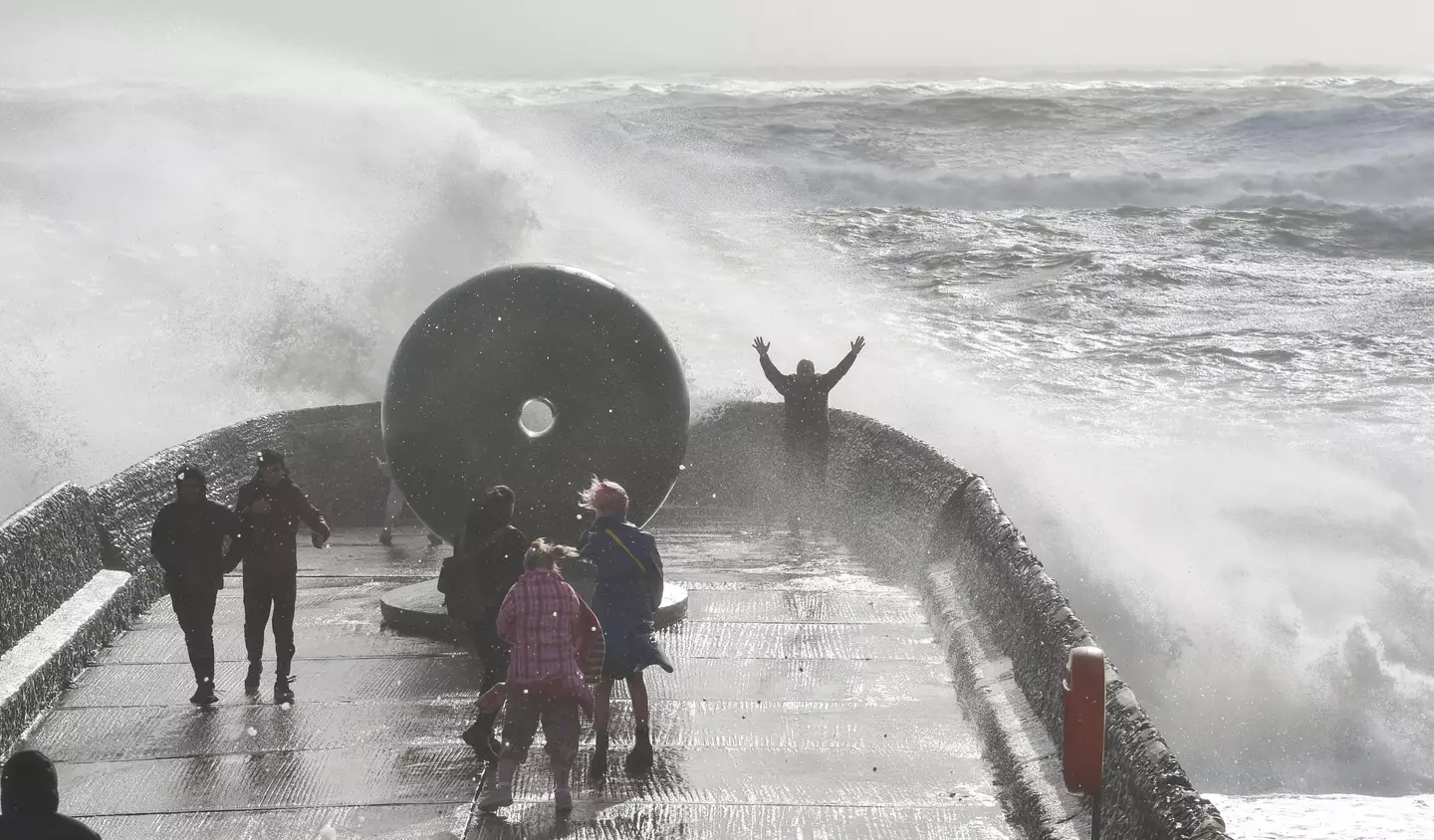
Scientists have warned that Storm Eunice may produce a rare 'sting jet' making the storm even deadlier than first predicted.
The storm, which is already causing havoc around the UK, could prove even worse. Scientists believe that it was a 'sting jet' that led to the Great Storm of 1987 causing catastrophic damage and killing 18 people.
It was after the storm in 1987 that the term 'sting jet' was coined by British scientists studying the weather phenomena.
Areas of low pressure tend to form conveyor belts of warm and cold air. The warm air rises and the cold air falls.
Advert
Sting jets are formed when a jet of cold air descends from three or four kilometres in the atmosphere down to the ground over a short period of time (usually three to four hours). As it descends it will gather speed and can reach speeds of over 100mph.

Sting jets can be extremely hard to predict - although many scientists think Storm Eunice may produce one later today (18 February), as it appears to share many similarities with the Great Storm of 1987.
Dr Peter Inness, a meteorologist at the University of Reading, said: "Eunice looks like it may be able to produce a 'sting jet', a narrow, focused region of extremely strong winds embedded within the larger area of strong winds and lasting just a few hours.
"Such events are quite rare but the 1987 'Great Storm' almost certainly produced a sting jet, and some of the more damaging wind storms since have also shown this pattern."
Advert
Meanwhile, Dr Ambrogio Volonté, a storm scientist at the University of Reading, told the i newspaper: "The structure and shape of Eunice is similar to the 1987 storm."
Reports from across the UK today show that Storm Eunice is already causing immense damage across the UK.
Thomas Church in Wells, Somerset, has had its spire torn off by the storm's gale-force winds.
BBC weatherman Ian Ferguson tweeted: "It's a miracle that this sizeable & very heavy spire tip, with windvane & lightning conductor, didn't hit anyone"
In London the storm has ripped away part of the O2 arena.
Advert


Food delivery services were suspended across parts of the UK due to high risks to their drivers.
At the time of writing, Storm Eunice is still wrecking havoc across the country, with Wales and the majority of England still under an amber warning.
The worst of the damage is expected to end by 9pm tonight, although the south coast of England is still under a yellow weather tomorrow.
Advert
The Met Office warns that further strong winds could hamper recovery efforts from Storm Eunice, and also said to expect delays or cancellations on road, rail, air and ferry services in the area.
